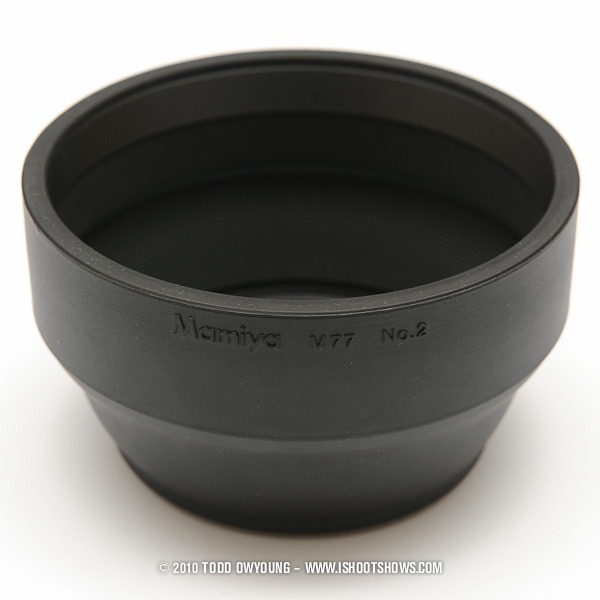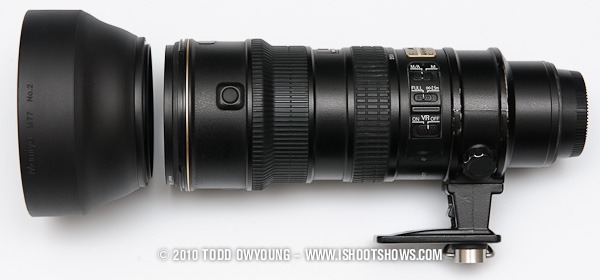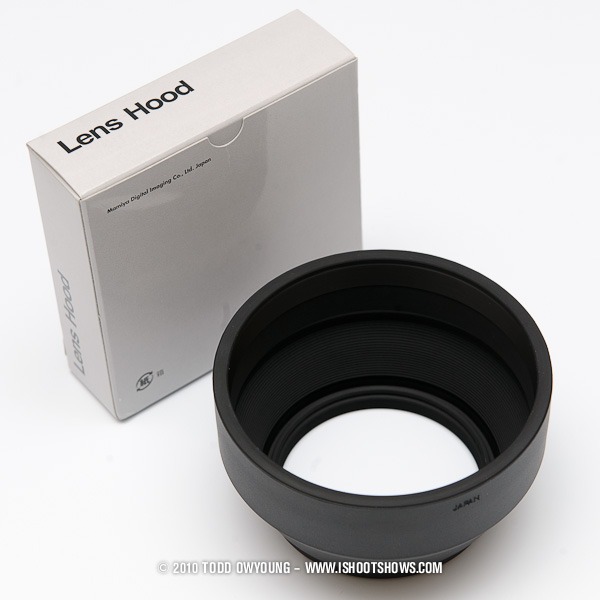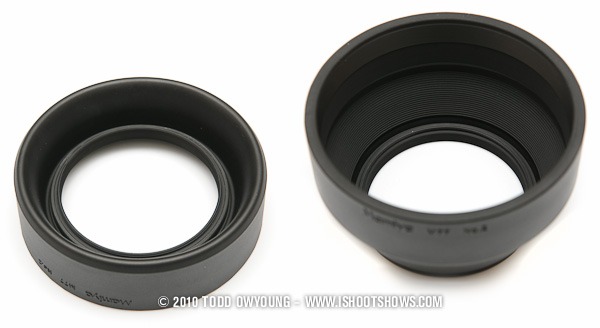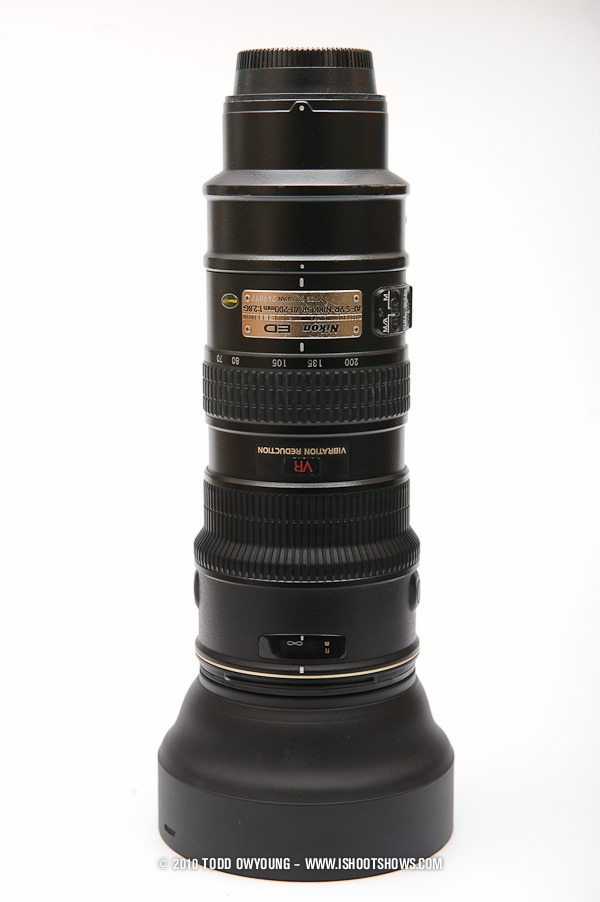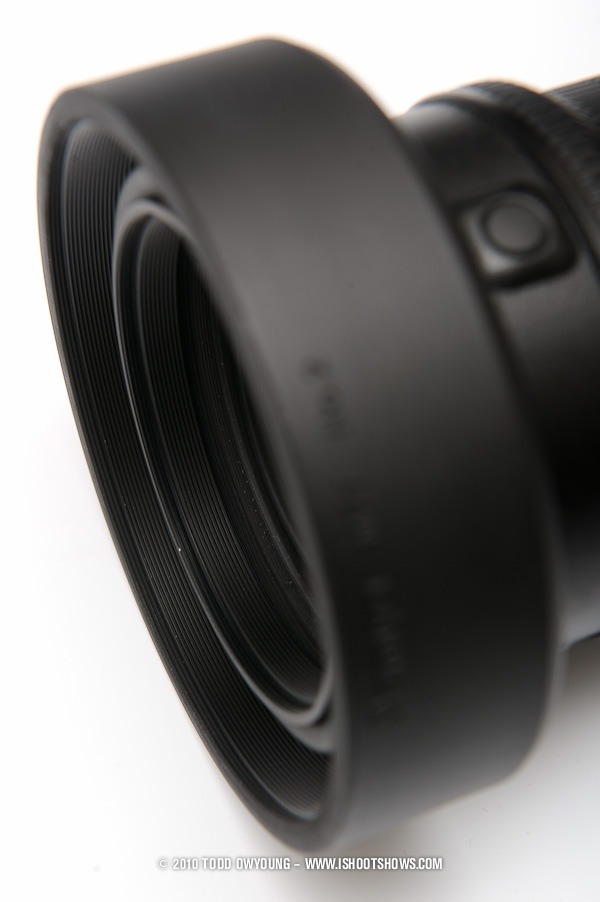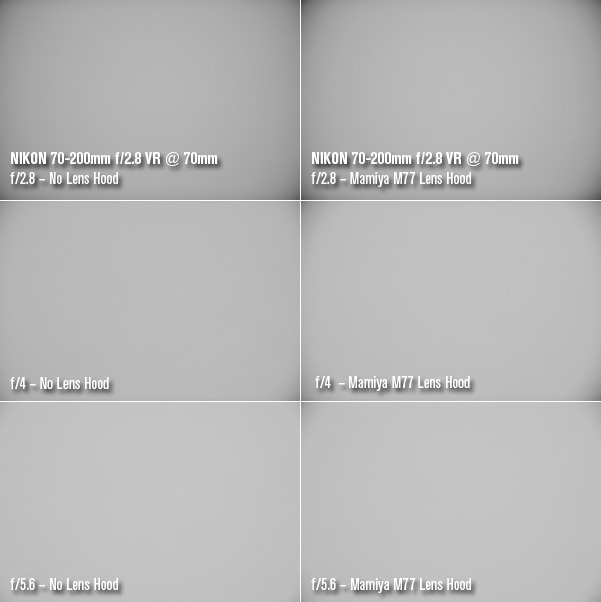A few months ago, I lost the lens hood to my Nikon 70-200mm f/2.8 VR I. To be honest, I'm surprised it didn't happen sooner – the lens hood on that zoom has always had a very weak lock and constantly came loose. And so, rather than buy the stock Nikon hood again, I went in search of a replacement.
When I mentioned losing the 70-200's lens hood on Twitter, many photographers suggested that I check out the Mamiya M77 #2 rubber lens hood, which is used by loads of pro photographers like Scott Kelby and speedlight guru Joe McNally as a replacement to the stock 70-200mm hood.
You can watch Scott Kelby pimp this lens hood on episode 32 of Kelby's D-Town. And if you don't know why you even want something sticking off the end of your camera like this, you can start with this article on using lens hoods.
Reasons To Upgrade
So, why look at this Mamiya lens hood instead of just replacing it with the Nikon HB-29 that the 70-200mm f/2.8 VR I ships with? Because the HB-29 in a horrible, horrible design. Case in point: the hood unlocking and liberating itself from my lens somewhere in between shooting Rob Zombie in the photo pit and exiting through a sea of fans.
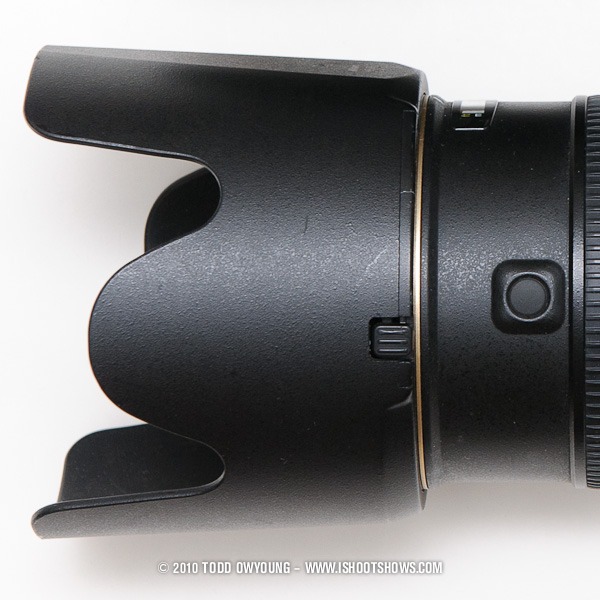
In the 5+ years I've owned the 70-200mm f/2.8 VR, the hood has been a constant sore point. Overall, the locking mechanism is very weak compared to comparable zooms like the Nikon 24-70mm f/2.8. And, for a lens hood as large as the HB-29, it's necessary to switch it from active to storage positions relatively often, which further weakens the tension lock. Thankfully, this has been solved with the 70-200mm f/2.8 VR II's lens hood – but that upgrade solution is a $2,000 fix instead of a $35 fix.
Mamiya To The Rescue
The Mamiya M77 #2 hood is designed for as a shade for lenses 127mm to 250mm in focal length. Of course, you have to consider that this is for medium format, so in 35mm terms this translates to roughly 80-160mm. The astute reader will notice that this doesn't quite fit the range of a 70-200mm lens – more on this later.
I should point out that there is also an M77 #1 rubber lens hood by Mamiya as well, but this hood is designed for shorter focal lengths.
What's In The Box
Design
The appeal of a screw-in, collapsable lens hood is all in its description. Unlike the reversible lens hoods that come with most zoom lenses these days, the Mamiya M77 is always attached and simply needs to be popped out for use. 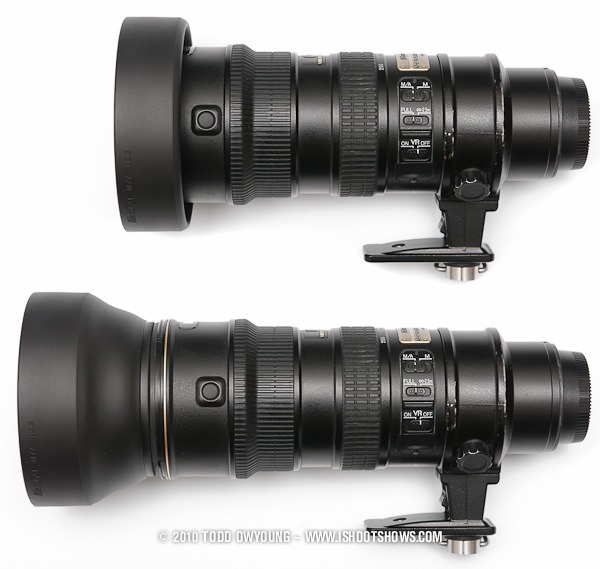
In addition, unlike cheaper folding rubber hoods, the M77 features all the molded light baffles you'd expect from a dedicated lens hood.
Build Quality
When you pay $35 for a lens hood, you expect it to be bad ass. And here, Mamiya delivers. This lens hood is not just your average third-party rubber hood.
The hood itself is heavy rubber, while both the front and back are reinforced with a metal ring.
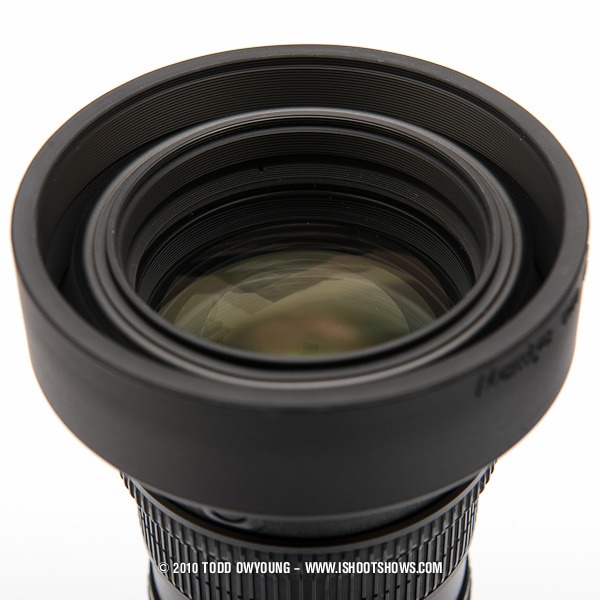
In a much cheaper folding rubber hood I tried, the rubber hood attached to what was essentially a metal filter ring by tension alone, but could easily be pulled off. When stowing or retrieving the 70-200mm from a tightly-fitting bag, pulling off the lens hood entirely was a constant concern.
The threaded metal collar of the M77, on the other hand, is very solidly bonded to the rubber hood with no give whatsoever. When the M77 is screwed into the 70-200mm, the only way for it to come off is to full unthread it. In other words, it's impossible for this lens hood to come off by itself, something which cannot be said for the 70-200mm VR I's stock hood, which comes lose if you look at it (or if you are wading through a sea of Rob Zombie fans).
Usability
The beauty of a folding rubber hood is that going from stored to active mode is as easy as pulling out. Anyone who's used a lens like the classic 105mm f/2.5 AI-S Nikkor will know the convenience of a pull-out hood, and the operation here is very similar.
However, unlike the built-in hood of the 105mmm f/2.5, the Mamiya M77 #2 does add noticeable width to a lens – about 1.5cm on either side, or 3cm to the total diameter of the lens. This added bulk is mainly an issue when storing the lens – due to the grippy nature of rubber, the hood may catch on the sides of your bag while being put away.
But for shooting, this hood is beautiful. Pull it out to use, collapse it to get it out of the way.
One additional bonus of a collapsable hood like this is that you can easily use a polarizing filter, as the hood features 77mm threads on the front barrel as well. Instead of having to remove the entire hood to adjust a polarizer, you can just pop back the hood, make your adjustments, and pull the hood back out. Easy.
Lastly, one bonus about the rubber material is that the inevitable bumps and knocks to the rubber hood are absorbed a little more than the with the rigid Nikon HB-29 lens hood.
Vignetting
If you shoot a non-full-frame camera, you can skip this section and just go buy this thing.
Remember how this lens hood is specified for lenses starting at ~80mm for the full-frame, 35mm format? Here-in lies the caveat of this otherwise flawless lens hood.
In my testing, this lens hood does create vignetting at 70mm on the Nikon 70-200mm f/2.8 VR I when using a full-frame body like the Nikon D3 or D700s that I use and own. The main reason for this, interestingly enough, isn't so much the length of the hood, but rather the threaded collar by which the hood attaches to your lens.
The collar itself isn't a thin, wimpy ring, but rather a somewhat beefy, 1cm-long tube of baffled metal. It's this short tube that's the culprit. And since this metal collar's position remains the same regardless of whether the actual hood is in or out, you have to unthread the entire hood and collar if you want to avoid vignetting with this accessory on a full-frame camera.
But how much vignetting, you may ask? And is it enough for you to care? Let's take a look.
Now, whether this small amount of vignetting is enough to warrant not using this hood is up to you. In addition, the amount of vignetting – if any – will vary from lens to lens. As you can see, by f/5.6 the vignetting is essentially gone – so for shooters who stop down for their photography, it's not really an issue.
For people who shoot wide-open, however, it's another story, as it's at f/2.8 where vignetting is most severe. It's also worth noting here that the 70-200m f/2.8 VR I vignettes on its own quite badly compared to the new and all-around-better 70-200mm f/2.8 VR II.
Again, this vignetting will only really show up on full-frame cameras – you won't see this level of corner shading on an APS-camera.
Conclusion
Pros:
- Excellent build quality
- Fantastic ease of use
- Will never fall off accidently
- Easy access/control of circular polarizer & other filters
Cons:
- Minor vignetting on full-frame at 70mm
The Mamiya M77 #2 rubber lens hood is nearly a perfect accessory, save for the issue of vignetting on a full-frame camera (and with at least the Nikon 70-200mm f/2.8 VR I that I use). By all other accounts, this rubber hood is enormously more usable than the stock lens hood.
This hood features great build quality, seems impossible to rip off, blocks stray light, and makes your telephoto look like a sexy plunger.
The big question is this: Is the vignetting a dealbreaker? For my use, right now, it's a non-issue. The usability of this lens trumps the small amount of vignetting induced by this hood. Also, for what it's worth, I didn't find mention of this vignetting issue in the recommendations from other photographers, who either didn't notice or are about the shading.
For users of APS-cameras like the Canon 7D or Nikon D7000 who are shooting 70-200mm f/2.8 lenses, you won't see this vignetting, so I fully recommend this little accessory if you're looking for an alterative telephoto lens hood. APS-shooters might also want to check out the Mamiya M77 #3 as well, which is going to offer you even more protection and reportedly doesn't vignette despite a deep profile.
Where To Buy
I bought my Mamiya M77 #2 from B&H for $36.50. If this review and other content on www.ishootshows.com was helpful to you, please consider supporting this site and purchasing your photo equipment any of the links in this review, my support page, or elsewhere on my site.
If you do buy through B&H or any of my affiliate links, drop me a line! I’d love to hear about what you picked up. B&H is where I personally buy the vast majority of my gear, and I’m looking forward to bringing you more reviews thanks to their equipment loans.
Questions? Comments?
Do you have questions about this Mamiya lens hood? Let me know.
Own the M77 #2? What do you think of it? Chime in and have your say!

